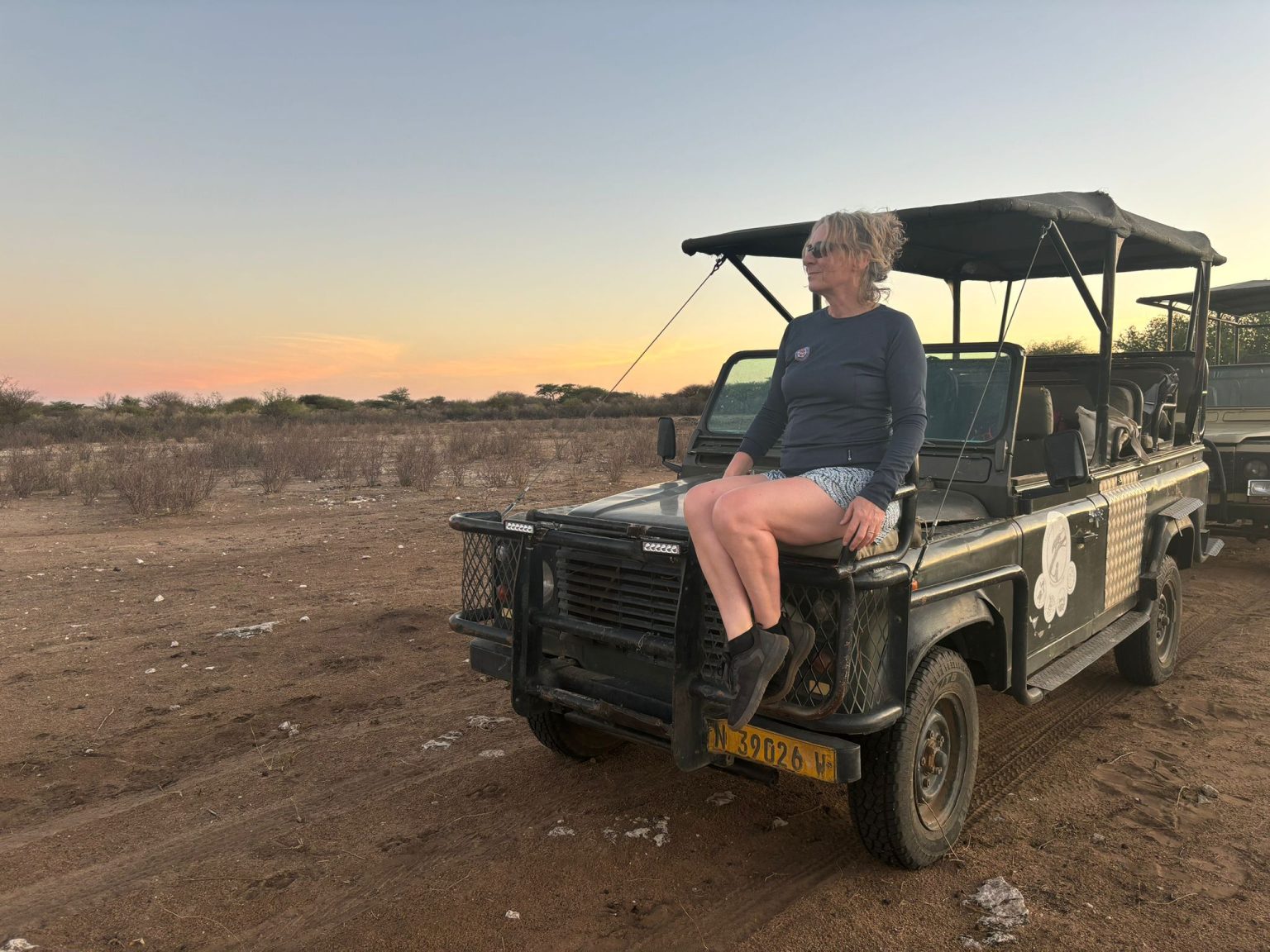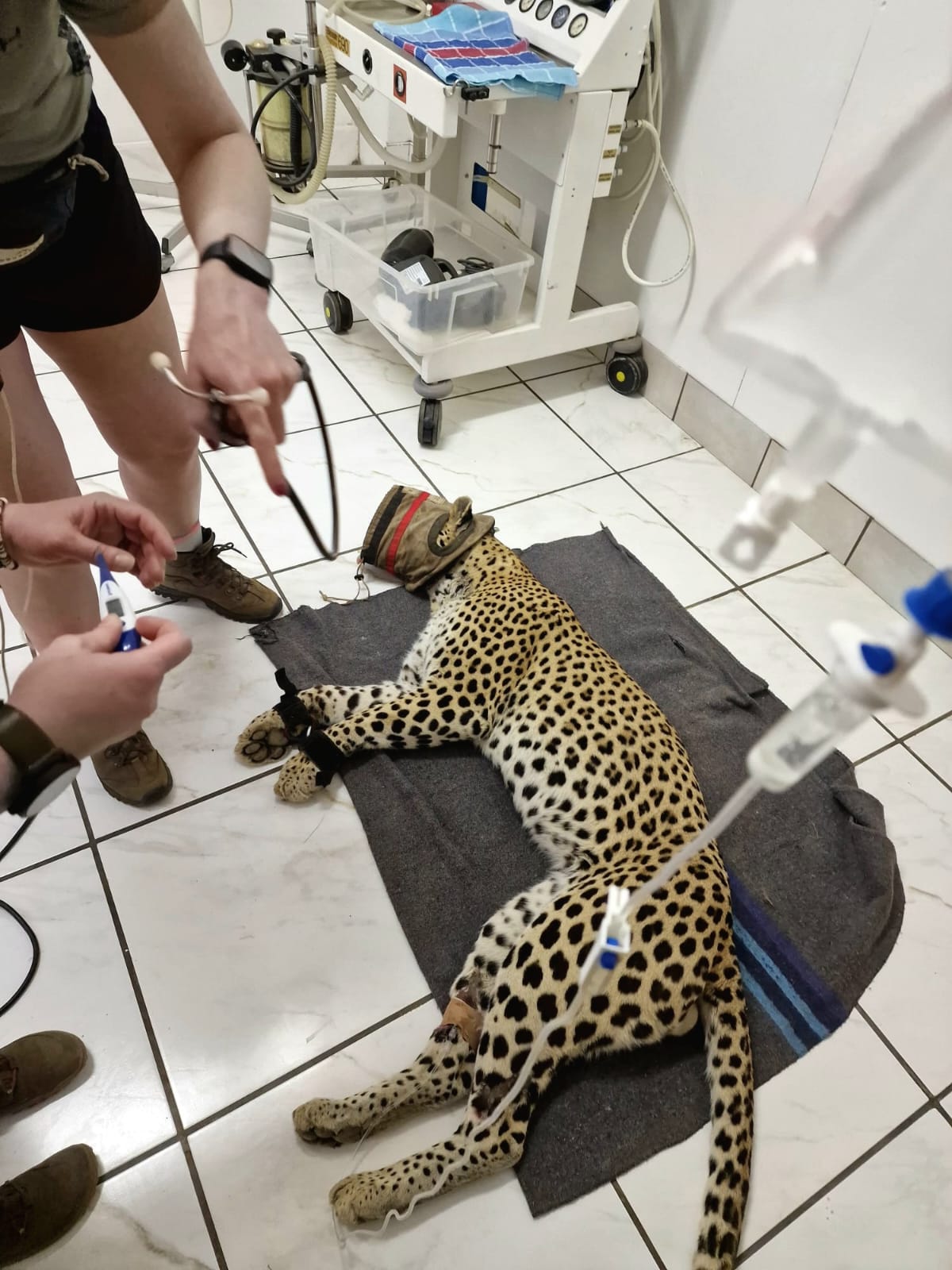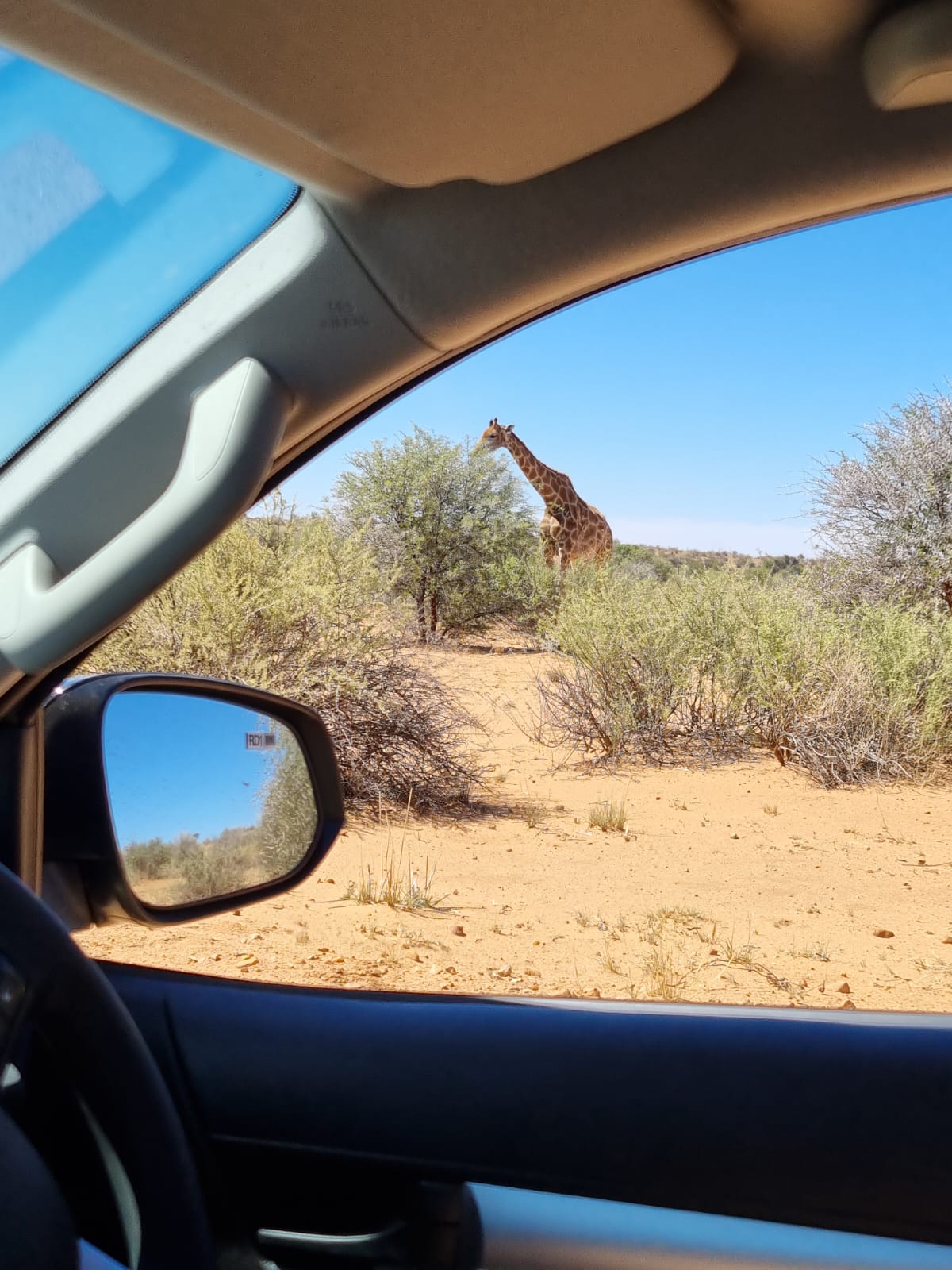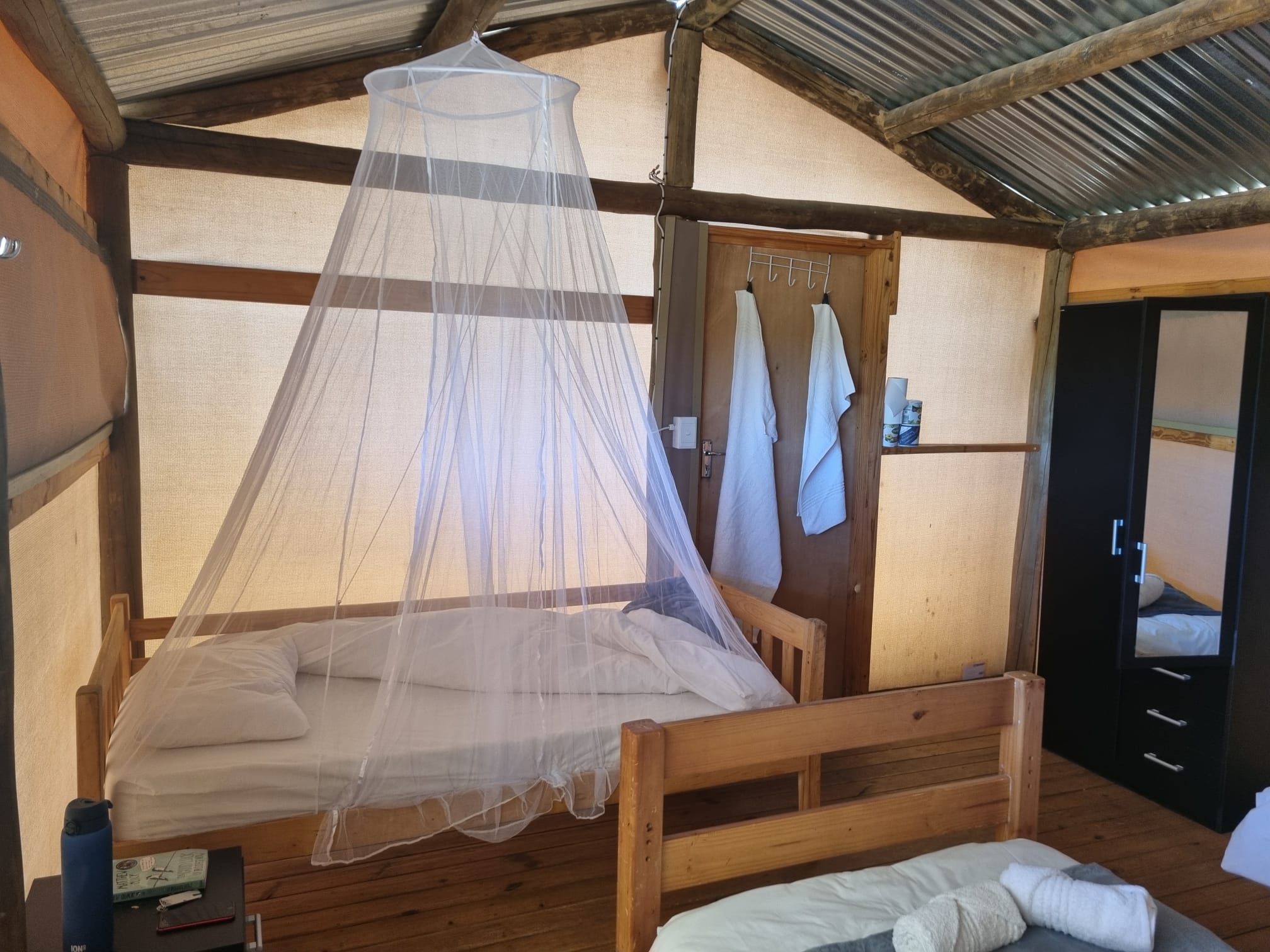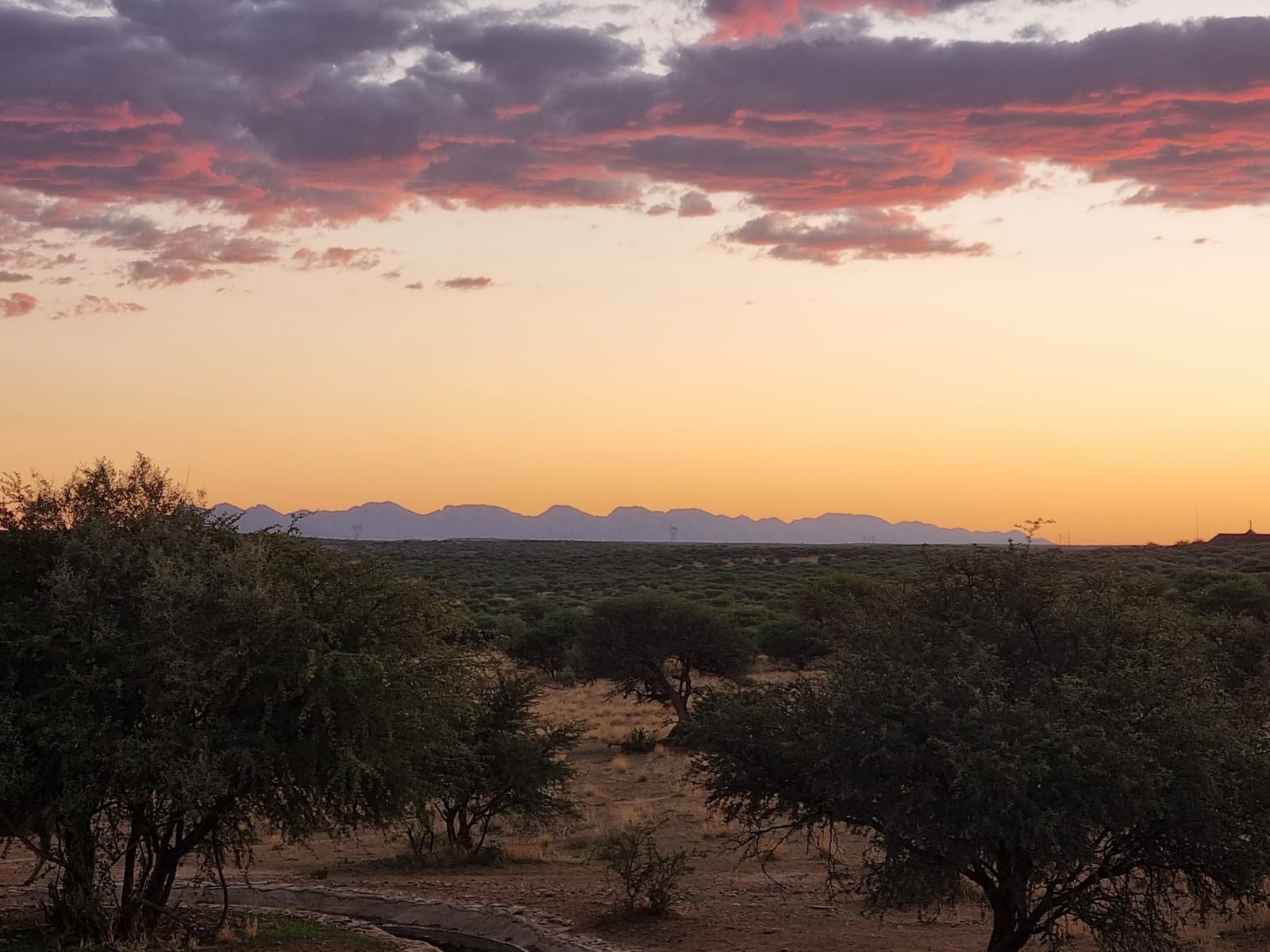Last December, I was lucky enough to attend the Conservation Medicine course in Namibia, run in partnership with the Na’ankuse Foundation. Having never travelled that far south in Africa before, and never alone. I was both excited and slightly nervous, but it turned out to be one of the most incredible weeks of my life.
Discovering Namibia and Its Unique Approach to Conservation
Namibia is a vast, dry, and sparsely populated country, famous for its dramatic landscapes and commitment to conservation. It was the first African nation to incorporate environmental protection into its constitution, making it a perfect setting for this immersive wildlife and medical training experience.
During the course, I gained firsthand insight into Namibia’s wildlife, conservation challenges, and the One Health approach—the idea that human, animal, and environmental health are interconnected. If Covid-19 taught us anything, it’s that this principle is more important than ever!
The Na’ankuse Foundation: Leading the Way in Conservation and Community Impact
The Na’ankuse Foundation has grown significantly in recent years, expanding its efforts to protect Namibia’s wildlife, landscapes, and communities. Their projects range from wildlife conservation and veterinary medicine to humanitarian initiatives, all supported by their eco-tourism experiences.
The foundation’s mission is clear:
“Our purpose is to help conserve the landscapes of Namibia, protect its wildlife, and improve the lives of the people we work with through sustainable, innovative commercial activities.”
From what I saw, they are doing an incredible job achieving all three.
A Unique Learning Experience with Experts in the Field
One of the things that made this course so special was the opportunity to learn directly from Na’ankuse’s founders, Rudie and Marlice van Vuuren. They spent time with our group, giving fascinating lectures on topics such as:
- The history of Na’ankuse and its conservation efforts
- The Lifeline Clinic and its work with remote communities
- The San People and their unique survival skills
- Bush survival techniques
On Day 4, we set off for Harnas Wildlife Sanctuary, with some of our group flying there in Rudie’s Cessna Caravan. I was lucky enough to experience this flight on the way back, a breathtaking reminder of how vast and remote this part of Africa truly is.
Immobilising a Leopard and a Rhino
During the course, we worked closely with Maaike de Schepper and Lyndsay Scott, two of Na’ankuse’s lead veterinarians, who are incredibly passionate and knowledgeable in their field. One of the highlights was accompanying them on two wildlife immobilisations, a white rhino and a leopard!
Being involved in these procedures was an unforgettable, hands-on learning experience, offering real-world insight into veterinary care, field anaesthesia, and wildlife conservation medicine.
Accommodation and Bush Living: An Unforgettable Setting
Beyond the incredible training and wildlife experiences, the hospitality was excellent. Accommodation at both the Na’ankuse Bush Camp and Harnas Wildlife Sanctuary was comfortable, with each participant having their own tent-style room (unless sharing with a friend or partner).
I say ‘tent’ loosely—they were permanent structures with wooden frames, strong canvas, and tin roofs, each equipped with a solar panel for hot water. One of my favourite moments was taking a warm shower under the stars in my open-air al fresco en-suite.
Wildlife, Culture, and Camaraderie
Every day of the course brought new experiences, shared with a fantastic group of 11 medics from around the world and the inspirational Na’ankuse team.
Incredible Wildlife Sightings: My first wildlife encounter happened before the course even started—giraffes casually munching on trees as I rode in a taxi from the airport!
Evenings Around the Campfire: From singalongs in the minibus to campfire drinks and conversations, the social side of the course was just as memorable.
Spectacular Sunsets and Night Skies: With no light pollution, Namibia’s sunrises, sunsets, and night skies were absolutely breathtaking.
The San People’s Language and Culture: Meeting the San People and learning about their unique language and survival skills was fascinating.
Final Thoughts: Why This Course is a Must-Do
This course was one of the most incredible experiences of my life. It offered the perfect combination of adventure, hands-on training, and conservation medicine, all set in one of the world’s most unique environments.
If you’re a medic, vet, or healthcare professional with a passion for wildlife conservation, veterinary medicine, and adventure, I highly recommend this course.
Thank you, World Extreme Medicine, for the opportunity, I’d go again tomorrow if I could! 😉
Considering the course? I’d be happy to chat and answer any questions! Book a Discovery Call to find out more.
→ Feeling inspired? Why not join us this year!
→ Sign up to our newsletter to keep up to date on exclusive content and news.

